

各位游戏大佬大家好,今天小编为大家分享关于gg修改器软root怎么使用的内容,轻松修改游戏数据,赶快来一起来看看吧。
创作不易,关注、点赞,分享、了解互联网前沿知识。
1.在一个业务复杂的系统中,有这样一种场景,一条sql语句需要锁表,导致暂时无法使用读服务,这将极大地影响业务的运行。采用主从复制,主库负责写,从库负责读。这样,即使表被锁定在主库,也可以通过读取从库来保证业务的正常运行。
2.做数据热备。
3.建筑的扩展。业务量越来越大,I/O访问的频率对于单机来说太高了。这时就需要多数据库存储来降低磁盘I/O访问的频率,提高单机的I/O性能。
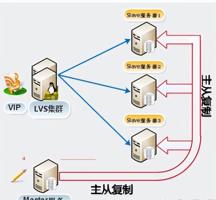
MySQL主从复制意味着数据可以从一个MySQL数据库服务器主节点复制到一个或多个从节点。MySQL默认采用异步复制,让从节点不用一直访问主服务器来更新自己的数据,数据可以在远程连接上更新。从节点可以复制主数据库中的所有数据库或特定数据库或特定表。
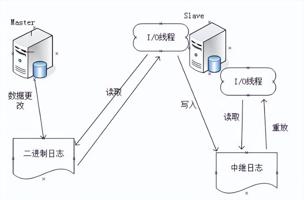
1、读写分离
2、数据实时备份,当系统中某个节点出现故障的时候,方便切换
3、高可用HA
4、架构扩展
MySQL主从形式


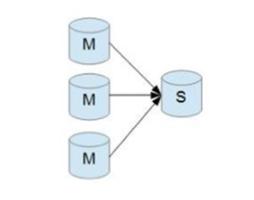

原理
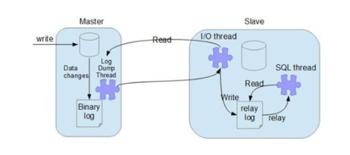
以下双主配置架构
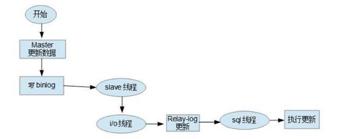
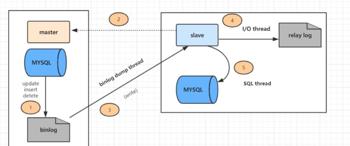

MySQL安装需要依次完成:
l 安装前准备
l 安装MYSQL
l 配置MySQL数据库
l 数据库主从配置
安装介质包包括:mysql-5.7.22-linux-glibc2.12-x86_64.tar.gz,位于安装介质包的mysql文件目录下,本次安装采用解压式安装。
MySQL安装目录为/usr/local/mysql。
MySQL数据文件存放目录为/data。
MySQL安装以主机pmondbs01为例。
在/tmp目录创建plugin目录,用于临时存放MySQL安装介质。
使用命令
|
执行顺序 |
命令 |
说明 |
|
1 |
mkdir -p /tmp/plugin |
在/tmp/下创建plugin目录 |
执行示意
|
[root@pmondbs01 ~] # mkdir /tmp/plugin |
然后以通过FTP方式上传mysql-5.7.22-linux-glibc2.12-x86_64.tar.gz。
MySQL安装采用解压式安装,即解压之后通过修改配置文件的方式完成MySQL部署。
1. 数据库文件部署
使用命令
|
执行顺序 |
命令 |
说明 |
|
1 |
mkdir /usr/local/mysql |
创建MySQL安装目录 |
|
2 |
cd /tmp/plugin/ |
进入MySQL安装介质路径/tmp/plugin |
|
3 |
tar -zxf mysql-5.7.22-linux-glibc2.12-x86_64.tar.gz -C /usr/local/mysql |
解压mysql-5.7.22-linux-glibc2.12-x86_64.tar.gz到/usr/local/mysql |
|
4 |
mv /usr/local/mysql/mysql-5.7.22-linux-glibc2.12-x86_64/* /usr/local/mysql/ |
移动/usr/local/mysql/mysql-5.7.22-linux-glibc2.12-x86_64/下所有文件到/usr/local/mysql/ |
|
5 |
rm -rf /usr/local/mysql/mysql-5.7.22-linux-glibc2.12-x86_64/ |
删除/usr/local/mysql/mysql-5.7.22-linux-glibc2.12-x86_64/目录 |
执行示意
|
[root@pmondbs01 ~] # mkdir /usr/local/mysql [root@pmondbs01 ~] # tar -zxf mysql-5.7.22-linux-glibc2.12-x86_64.tar.gz -C /usr/local/mysql [root@pmondbs01 ~] # mv /usr/local/mysql/mysql-5.7.22-linux-glibc2.12-x86_64/* /usr/local/mysql/ [root@pmondbs01 ~] # rm -rf /usr/local/mysql/mysql-5.7.22-linux-glibc2.12-x86_64/ |
2. 创建数据文件目录及数据库专属用户账号
数据文件目录为/data,数据库专属用户为mysql和用户组为mysql,需要将MySQL安装目录和数据文件所在读写权限赋予用户mysql。
使用命令
|
执行顺序 |
命令 |
说明 |
|
1 |
mkdir -p /data/ |
创建数据文件目录 |
|
2 |
groupadd mysql |
创建mysql用户组 |
|
3 |
useradd -g mysql mysql |
创建mysql用户 |
|
4 |
chmod -R 755 /usr/local/mysql/ |
赋予MySQL安装目录 /usr/local/mysql/ 775权限 |
|
5 |
chown -R mysql.mysql /usr/local/mysql/ |
改变MySQL安装目录属主为mysql |
|
6 |
chmod -R 755 /data/ |
赋予MySQL数据文件目录 /data/ 775权限 |
|
7 |
chown -R mysql.mysql /data/ |
改变MySQL数据文件目录属主为mysql |
执行示意
|
[root@pmondbs01 ~] # mkdir -p /data/ [root@pmondbs01 ~] # groupadd mysql [root@pmondbs01 ~] # useradd -g mysql mysql [root@pmondbs01 ~] # chmod -R 755 /usr/local/mysql/ [root@pmondbs01 ~] # chown -R mysql.mysql /usr/local/mysql/ [root@pmondbs01 ~] # chmod -R 755 /data/ [root@pmondbs01 ~] # chown -R mysql.mysql /data/ |
3. 主MySQL配置文件
将安装介质中conf文件夹下f通过FTP方式上传至/etc/下,然后修改以下参数配置。
参数设置详情为:
|
参数所属节点 |
参数 |
值 |
|
mysqld |
server-id |
1 |
|
port |
3306 |
|
|
basedir |
/usr/local/mysql |
|
|
datadir |
/data/ |
使用命令
|
执行顺序 |
命令 |
说明 |
|
1 |
vi /etc/f |
编辑MySQL配置文件 |
|
2 |
[mysqld] server-id =1 port =3306 basedir =/usr/local/mysql datadir = /data/ |
[mysqld]参数节点,需要修改=号后面的值 |
执行示意
|
[root@pmondbs01 ~] # vi /etc/f [mysqld] server-id = 1 port = 3306 basedir =/usr/local/mysql datadir = /data/ |
4. 若启用MySQL主从配置,则需要修改备库MySQL配置文件f,以pmondbs02为例,需要将参数server-id的值修改为10,其他配置和主库配置保持一致。
使用命令
|
执行顺序 |
命令 |
说明 |
|
1 |
vi /etc/f |
编辑MySQL配置文件 |
|
2 |
[mysqld] server-id =10 |
[mysqld]参数节点,需要修改=号后面的值 |
执行示意
注意:以下操作在从MySQL数据库上执行,比如从MySQL数据库在pmondbs02主机上。
|
[root@pmondbs02 ~] # vi /etc/f [mysqld] server-id = 10 |
注意:在备MySQL数据库上操作完毕。
5. 配置MySQL服务随操作系统启动,
配置MySQL服务随操作系统启动,需要从MySQL安装目录复制MySQL启动脚本到/etc/init.d目录下,文件名为mysqld。然后在启动脚本中添加MySQL的安装目录和数据文件目录,确认无误后保存,赋予mysqld文件755权限,然后使用chkconfig设置MySQL随操作系统启动。
MySQL启动脚本位于/usr/local/mysql/support-files/目录下,文件名为mysql.server。
MySQL启动脚本中需要修改:basedir=/usr/local/mysql和datadir=/data/。
使用命令
|
执行顺序 |
命令 |
说明 |
|
1 |
cp -af /usr/local/mysql/support-files/mysql.server /etc/init.d/mysqld |
复制MySQL启动脚本mysql.server到/etc/init.d/目录下,文件名为mysqld |
|
2 |
vi /etc/init.d/mysqld |
编辑/etc/init.d/mysqld文件 |
|
3 |
basedir=/usr/local/mysql datadir=/data/ |
输入内容 |
|
4 |
chmod 755 /etc/init.d/mysqld |
赋予MySQL启动脚本755权限 |
|
5 |
chkconfig –add mysqld |
添加MySQL启动随系统启动 |
|
6 |
chkconfig –level 345 mysqld on |
修改MySQL启动级别 |
执行示意
|
[root@pmondbs01 ~]# cp -af /usr/local/mysql/support-files/mysql.server /etc/init.d/mysqld [root@pmondbs01 ~]# vi /etc/init.d/mysqld # If you change base dir, you must also change datadir. These may get # overwritten by settings in the MySQL configuration files. basedir=/usr/local/mysql datadir=/data/ [root@pmondbs01 ~]# chmod 755 /etc/init.d/mysqld [root@pmondbs01 ~]# chkconfig –add mysqld [root@pmondbs01 ~]# chkconfig –level 345 mysqld on |
6. 初始化MySQL数据库
在MySQL安装目录进入bin目录下执行带上参数执行mysqld命令完成MySQL数据库初始化。
mysqld命令初始化数据库参数为–initialize –user=mysql –basedir=/usr/local/mysql –datadir=/data。
使用命令
|
执行顺序 |
命令 |
说明 |
|
1 |
cd /usr/local/mysql/bin |
进入MySQL的bin目录 |
|
2 |
./mysqld –initialize –user=mysql –basedir=/usr/local/mysql –datadir=/data |
带参数执行mysqld |
执行示意
|
[root@pmondbs01 ~]# cd /usr/local/mysql/bin [root@pmondbs01 ~]# ./mysqld –initialize –user=mysql –basedir=/usr/local/mysql –datadir=/data |
MySQL5.7以后root账号的密码采用启动MySQL后生成随机密码的方式,所以修改MySQL的root账号密码需要完成以下几步操作。
1. 启动MySQL服务
启动MySQL服务命令为service mysqld start。
使用命令
|
执行顺序 |
命令 |
说明 |
|
1 |
service mysqld start |
启动MySQL服务 |
|
2 |
ln -s /tmp/mysql.sock /var/lib/mysql/[Joey1] mysql.sock |
创建/tmp/mysql.sock软链接到/var/lib/mysql/mysql.sock |
执行示意
|
[root@pmondbs01 ~]# service mysqld start [root@pmondbs01 ~]# ln -s /tmp/mysql.sock /var/lib/mysql/mysql.sock |
2. 查询root账号临时密码
检索在MySQL数据文件目录的mysql-error.log文件可以查找到密码,密码检索关键字为“password”,关键字“password”所在行“A temporary password is generated for root@localhost:”后面为临时密码,比如“swf88nhHgx(z”为临时密码。该临时密码作为第一次使用root账号登录数据库使用的密码。
注:MySQLroot账号的临时密码是随机生成的每次安装都会产生不同的密码。
mysql-error.log位于/data/下。
使用命令
|
执行顺序 |
命令 |
说明 |
|
1 |
cat /data/mysql-error.log|grep password |
读取mysql-error.log并过滤关键password |
|
2 |
2020-01-08T15:48:42.569059+08:00 1 [Note] A temporary password is generated for root@localhost: swf88nhHgx(z |
输出 |
执行示意
|
[root@pmondbs01 ~]# cat /data/mysql-error.log|grep password 2020-01-08T15:48:42.569059+08:00 1 [Note] A temporary password is generated for root@localhost: swf88nhHgx(z |
3. 修改root账号密码
登录MySQL数据库,修改root账号密码为password,创建可以从任何主机访问数据库的root账号并设置密码为password,用于管理数据库;创建可以从任何主机访问数据库的同步账号repl并设置密码为repl,用于MySQL数据库主从同步,并给账号赋予相应权限。
登录MySQL数据库命令为mysql -uroot -p,回车之后输入密码,密码为上一步操作查询到的临时密码swf88nhHgx(z。
创建root账号并设置密码为password的SQL语句为:“create user root@’%’ identified by ’password’;”
授权root账号具有所有权限的SQL语句为grant all privileges on *.* to root@’%’;
修改root账号密码为password的SQL语句为alter user root@localhost identified by ’password’;
使用命令
|
执行顺序 |
命令 |
说明 |
|
1 |
cd /usr/local/mysql/bin |
进入MySQL安装目录的bin目录下 |
|
2 |
./mysql -uroot -p |
启动MySQL客户端 |
|
3 |
swf88nhHgx(z |
输入root账号密码,进入MySQL命令行客户端。root账号密码在上一步骤中获取。 |
|
4 |
alter user root@localhost identified by ’password’; |
修改root账号密码为password |
|
5 |
create user root@’%’ identified by ’password’; |
创建可以从任何主机访问数据库的root账号并设置密码为password |
|
6 |
grant all privileges on *.* to root@’%’; |
授权可以从任何主机访问数据库的root账号所有权限 |
|
7 |
flush privileges; |
刷新数据库权限 |
|
12 |
flush privileges; |
刷新数据库权限 |
|
13 |
create user repl@’%’ identified by ’repl’; |
创建可以从任何主机访问数据库的repl账号并设置密码为reple |
|
14 |
grant replication slave on *.* to ’repl’@’%’; |
授权可以从任何主机访问数据库的repl账号replication slave权限 |
|
15 |
flush privileges; |
刷新数据库权限 |
|
16 |
quit; |
退出MySQL命令行客户端 |
执行示意
|
[root@localhost ~]# cd /usr/local/mysql/bin [root@pmondbs01 bin]# ./mysql -uroot -p Enter password: e to the MySQL monitor. Commands end with ; or g. Your MySQL connection id is 4 Server version: 5.7.22-log Copyright (c) 2000, 2018, Oracle and/or its affiliates. All rights reserved. Oracle is a registered trademark of Oracle Corporation and/or its affiliates. Other names may be trademarks of their respective owners. Type ’help;’ or ’h’ for help. Type ’c’ to clear the current input statement. MySQL [(none)]>alter user root@localhost identified by ’password’; Query OK, 0 rows affected (0.02 sec) MySQL [(none)]> create user root@’%’ identified by ’password’; Query OK, 0 rows affected (0.05 sec) MySQL [(none)]> grant all privileges on *.* to root@’%’; Query OK, 0 rows affected (0.06 sec) MySQL [(none)]> flush privileges; Query OK, 0 rows affected (0.05 sec) MySQL [(none)]> create user ’zabbix’@localhost identified by ’zabbix’; Query OK, 0 rows affected (0.06 sec) MySQL [(none)]> create user ’zabbix’@’%’ identified by ’zabbix’; Query OK, 0 rows affected (0.06 sec) MySQL [(none)]> grant all privileges on *.* to ’zabbix’@localhost; Query OK, 0 rows affected, 1 warning (0.05 sec) MySQL [(none)]> grant all privileges on *.* to ’zabbix’@’%’; Query OK, 0 rows affected (0.05 sec) MySQL [(none)]> flush privileges; Query OK, 0 rows affected (0.03 sec) MySQL [(none)]> create user repl@’%’ identified by ’repl’; Query OK, 0 rows affected (0.04 sec) MySQL [(none)]> grant replication slave on *.* to ’repl’@’%’; Query OK, 0 rows affected (0.05 sec) MySQL [(none)]> flush privileges; Query OK, 0 rows affected (0.03 sec) MySQL [(none)]> quit; Bye [root@localhost bin]# |
两台MySQL数据库做主从配置,假设情况如下:
|
主机名 |
IP地址 |
角色 |
参数server-id |
同步用户名 |
同步密码 |
|
pmondbs01 |
.81.49 |
主 |
1 |
repl |
repl |
|
pmondbs02 |
.81.50 |
从 |
10 |
repl |
repl |
数据库基本配置参考7.2、7.3。
数据库主从配置参数server-id的值务必不能一样。
参数server-id的值与前面章节保持一致。
检查.81.49并设置server-id参数值。
|
[root@pmondbs01 bin]# vi /etc/f [mysqld] server-id = 1 |
如果server-id参数值未设置为1,设置之后重启MySQL数据库,设置server-id参数值参考7.2安装MySQL。
检查.81.50并设置server-id参数值。
|
[root@pmondbs02 bin]# vi /etc/f [mysqld] server-id = 10 |
如果server-id参数值未设置为10,设置之后重启MySQL数据库,设置server-id参数值参考7.2安装MySQL。
重启MySQL使用命令
|
执行顺序 |
命令 |
说明 |
|
1 |
service mysqld stop |
停止MySQL |
|
2 |
service mysqld start |
启动MySQL |
执行示意,以在服务器pmondbs01上为例
|
[root@pmondbs01 ~] # service mysql stop [root@pmondbs01 ~] # service mysql start |
1. 登录81.49 MySQL数据库,执行show master status,检查并记录Master状态。记录File、Position,File为mysql-bin.000003,Position为194。
使用命令
|
执行顺序 |
命令 |
说明 |
|
1 |
cd /usr/local/mysql/bin |
进入MySQL安装目录的bin目录下 |
|
2 |
./mysql -uroot -p |
启动MySQL客户端 |
|
3 |
password |
输入root账号密码,进入MySQL命令行客户端。 |
|
4 |
show master status; |
查看Master状态 |
执行示意
|
[root@pmondbs01 ~]# cd /usr/local/mysql/bin [root@pmondbs01 bin]# ./mysql -uroot -p Enter password: e to the MySQL monitor. Commands end with ; or g. Your MySQL connection id is 4 Server version: 5.7.22-log Copyright (c) 2000, 2018, Oracle and/or its affiliates. All rights reserved. Oracle is a registered trademark of Oracle Corporation and/or its affiliates. Other names may be trademarks of their respective owners. Type ’help;’ or ’h’ for help. Type ’c’ to clear the current input statement. MySQL [(none)]>show master status; +——————+———-+————–+——————+—————————————————————————————+ | File | Position | Binlog_Do_DB | Binlog_Ignore_DB | Executed_Gtid_Set | +——————+———-+————–+——————+—————————————————————————————+ | mysql-bin.000002 | 3842 | | | 15aa5540-31fc-11ea-9d2d-84139f30d4bd:1-14, 4a871e1c-31eb-11ea-81b2-84139f30d4f5:13-15 | +——————+———-+————–+——————+—————————————————————————————+ 1 row in set (0.00 sec) MySQL [(none)]> |
2. 登录.81.50 MySQL数据库,执行show master status,检查并记录Master状态。记录File、Position,File为mysql-bin.000003,Position为194。
使用命令
|
执行顺序 |
命令 |
说明 |
|
1 |
cd /usr/local/mysql/bin |
进入MySQL安装目录的bin目录下 |
|
2 |
./mysql -uroot -p |
启动MySQL客户端 |
|
3 |
password |
输入root账号密码,进入MySQL命令行客户端。 |
|
4 |
show master status; |
查看Master状态 |
执行示意
|
[root@pmondbs02 ~]# cd /usr/local/mysql/bin [root@pmondbs02 bin]# ./mysql -uroot -p Enter password: e to the MySQL monitor. Commands end with ; or g. Your MySQL connection id is 4 Server version: 5.7.22-log Copyright (c) 2000, 2018, Oracle and/or its affiliates. All rights reserved. Oracle is a registered trademark of Oracle Corporation and/or its affiliates. Other names may be trademarks of their respective owners. Type ’help;’ or ’h’ for help. Type ’c’ to clear the current input statement. MySQL [(none)]>show master status; +——————+———-+————–+——————+—————————————————————————————+ | File | Position | Binlog_Do_DB | Binlog_Ignore_DB | Executed_Gtid_Set | +——————+———-+————–+——————+—————————————————————————————+ | mysql-bin.000003 | 3042 | | | 15aa5540-31fc-11ea-9d2d-84139f30d4bd:13-14, 4a871e1c-31eb-11ea-81b2-84139f30d4f5:1-15 | +——————+———-+————–+——————+—————————————————————————————+ 1 row in set (0.00 sec) MySQL [(none)]> |
master_log_file和master_log_pos参数来自7.4.2记录的File和Position。
登录.81.49MySQL数据库之后执行“change master to master_host=’.4.81.50’,master_user=’repl’,master_password=’repl’,master_log_file=’mysql-bin.000003’,master_log_pos=3042;”。
使用命令
|
执行顺序 |
命令 |
说明 |
|
1 |
cd /usr/local/mysql/bin |
进入MySQL安装目录的bin目录下 |
|
2 |
./mysql -uroot -p |
启动MySQL客户端 |
|
3 |
password |
输入root账号密码,进入MySQL命令行客户端。 |
|
4 |
change master to master_host=’81.50’,master_user=’repl’,master_password=’repl’,master_log_file=’mysql-bin.000003’,master_log_pos=194; |
查看Master状态 |
|
5 |
start slave; |
启动主从同步 |
执行示意
|
MySQL [(none)]> change master to master_host=’.81.50’,master_user=’repl’,master_password=’repl’,master_log_file=’mysql-bin.000003’,master_log_pos=3042; MySQL [(none)]>start slave; |
登录.81.50MySQL数据库之后执行“change master to master_host=’.81.49’,master_user=’repl’,master_password=’repl’,master_log_file=’mysql-bin.000002’,master_log_pos=3842;”。
使用命令
|
执行顺序 |
命令 |
说明 |
|
1 |
cd /usr/local/mysql/bin |
进入MySQL安装目录的bin目录下 |
|
2 |
./mysql -uroot -p |
启动MySQL客户端 |
|
3 |
password |
输入root账号密码,进入MySQL命令行客户端。 |
|
4 |
change master to master_host=’.81.49’,master_user=’repl’,master_password=’repl’,master_log_file=’mysql-bin.000003’,master_log_pos=194; |
查看Master状态 |
|
5 |
start slave; |
启动主从同步 |
执行示意
|
MySQL [(none)]> change master to master_host=’.81.49’,master_user=’repl’,master_password=’repl’,master_log_file=’mysql-bin.000002’,master_log_pos=3842; MySQL [(none)]>start slave; |
登录.81.49MySQL数据库执行命令show slave status G;,查看Slave_IO_Running、Slave_SQL_Running是否为Yes,为Yes表示主从正常执行。
执行命令:
show slave status G;
|
MySQL [(none)]>show slave status G; *************************** 1. row *************************** Slave_IO_State: Waiting for master to send event Master_Host: .81.50 Master_User: repl Master_Port: 3306 Connect_Retry: 60 Master_Log_File: mysql-bin.000002 Read_Master_Log_Pos: 3842 Relay_Log_File: mysql-relay.000002 Relay_Log_Pos: 764 Relay_Master_Log_File: mysql-bin.000002 Slave_IO_Running: Yes Slave_SQL_Running: Yes Replicate_Do_DB: Replicate_Ignore_DB: Replicate_Do_Table: Replicate_Ignore_Table: Replicate_Wild_Do_Table: Replicate_Wild_Ignore_Table: Last_Errno: 0 Last_Error: Skip_Counter: 0 Exec_Master_Log_Pos: 3842 Relay_Log_Space: 967 Until_Condition: None Until_Log_File: Until_Log_Pos: 0 Master_SSL_Allowed: No Master_SSL_CA_File: Master_SSL_CA_Path: Master_SSL_Cert: Master_SSL_Cipher: Master_SSL_Key: Seconds_Behind_Master: 0 Master_SSL_Verify_Server_Cert: No Last_IO_Errno: 0 Last_IO_Error: Last_SQL_Errno: 0 Last_SQL_Error: Replicate_Ignore_Server_Ids: Master_Server_Id: 10 Master_UUID: 15aa5540-31fc-11ea-9d2d-84139f30d4bd Master_Info_File: mysql.slave_master_info SQL_Delay: 0 SQL_Remaining_Delay: NULL Slave_SQL_Running_State: Slave has read all relay log; waiting for more updates Master_Retry_Count: 86400 Master_Bind: Last_IO_Error_Timestamp: Last_SQL_Error_Timestamp: Master_SSL_Crl: Master_SSL_Crlpath: Retrieved_Gtid_Set: 15aa5540-31fc-11ea-9d2d-84139f30d4bd:13-14 Executed_Gtid_Set: 15aa5540-31fc-11ea-9d2d-84139f30d4bd:13-14, 4a871e1c-31eb-11ea-81b2-84139f30d4f5:1-15 Auto_Position: 0 Replicate_Rewrite_DB: Channel_Name: Master_TLS_Version: 1 row in set (0.00 sec) ERROR: No query specified MySQL [(none)]> |
登录.81.50MySQL数据库执行命令show slave status G;,查看Slave_IO_Running、Slave_SQL_Running是否为Yes,为Yes表示主从正常执行。
|
MySQL [(none)]>show slave status G; *************************** 1. row *************************** Slave_IO_State: Waiting for master to send event Master_Host: .81.49 Master_User: repl Master_Port: 3306 Connect_Retry: 60 Master_Log_File: mysql-bin.000003 Read_Master_Log_Pos: 3842 Relay_Log_File: mysql-relay.000002 Relay_Log_Pos: 1025 Relay_Master_Log_File: mysql-bin.000003 Slave_IO_Running: Yes Slave_SQL_Running: Yes Replicate_Do_DB: Replicate_Ignore_DB: Replicate_Do_Table: Replicate_Ignore_Table: Replicate_Wild_Do_Table: Replicate_Wild_Ignore_Table: Last_Errno: 0 Last_Error: Skip_Counter: 0 Exec_Master_Log_Pos: 3842 Relay_Log_Space: 1228 Until_Condition: None Until_Log_File: Until_Log_Pos: 0 Master_SSL_Allowed: No Master_SSL_CA_File: Master_SSL_CA_Path: Master_SSL_Cert: Master_SSL_Cipher: Master_SSL_Key: Seconds_Behind_Master: 0 Master_SSL_Verify_Server_Cert: No Last_IO_Errno: 0 Last_IO_Error: Last_SQL_Errno: 0 Last_SQL_Error: Replicate_Ignore_Server_Ids: Master_Server_Id: 1 Master_UUID: 4a871e1c-31eb-11ea-81b2-84139f30d4f5 Master_Info_File: mysql.slave_master_info SQL_Delay: 0 SQL_Remaining_Delay: NULL Slave_SQL_Running_State: Slave has read all relay log; waiting for more updates Master_Retry_Count: 86400 Master_Bind: Last_IO_Error_Timestamp: Last_SQL_Error_Timestamp: Master_SSL_Crl: Master_SSL_Crlpath: Retrieved_Gtid_Set: 4a871e1c-31eb-11ea-81b2-84139f30d4f5:13-15 Executed_Gtid_Set: 15aa5540-31fc-11ea-9d2d-84139f30d4bd:1-14, 4a871e1c-31eb-11ea-81b2-84139f30d4f5:13-15 Auto_Position: 0 Replicate_Rewrite_DB: Channel_Name: Master_TLS_Version: 1 row in set (0.00 sec) ERROR: No query specified MySQL [(none)]> |
ln: 无法创建符号链接”/var/lib/mysql/mysql.sock”: 没有那个文件或目录
以上就是关于gg修改器软root怎么使用的全部内容,游戏大佬们学会了吗?

gg修改器怎root权限,下载 gg修改器怎root权限 软件 分类:免root版 3,513人在玩 gg修改器是一款非常实用的工具软件,它可以帮助用户在游戏中修改一些参数,比如金币数量、经验值等等。同时,它也可以让您拥有ROOT权限,这意味着您可以对手机进行更深层次的操作。……
下载
gg修改器跳过root,下载gg修改器:越狱神器,轻松跳过root限制 分类:免root版 4,389人在玩 如果你是一名Android手机用户,那么你一定会遇到一个非常棘手的问题:无法使用某些应用程序或者玩某些游戏,因为它们需要在已经进行了root权限的设备上运行。然而,对于很多人来说……
下载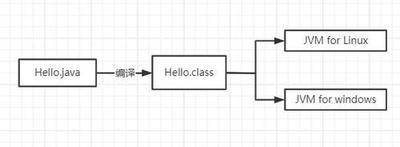
没有root能用gg修改器嘛,没有root能用gg修改器嘛?试试这个软件下载 分类:免root版 1,824人在玩 对于大部分 Android 用户来说,想要修改游戏数据通常需要 root 权限,而这对于一些不想刷机的用户来说是一个难题。幸好现在有了一个解决方法——GG 修改器。但问题又来了,GG 修改器……
下载
gg修改器root用法,下载gg修改器root,让你的游戏体验更加出色 分类:免root版 3,448人在玩 如果你是一名玩家,那么你一定知道在游戏中拥有一个好的游戏体验是多么的重要。而在这个过程中,各种hack工具和修改器成为了玩家们不可或缺的助手之一。其中,gg修改器root就是众多……
下载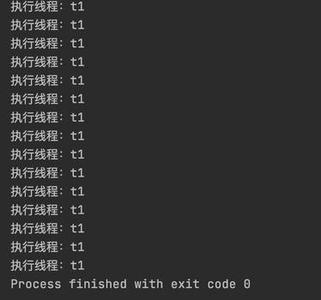
gg修改器要不要root,下载一个好用的gg修改器,无需root权限 分类:免root版 5,390人在玩 如果你是一名游戏爱好者,那么对于游戏中的各种道具、资源以及难度等方面的调整可能会有所需求。而这时候,gg修改器就可以帮助你了。gg修改器是通过修改游戏内存地址来实现修改游戏……
下载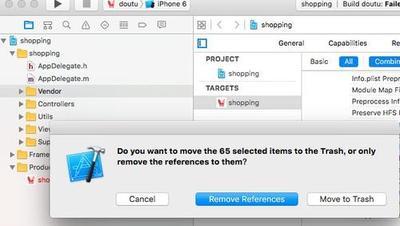
如何启动gg修改器root,下载一个操作简单的GG修改器root让你爽到飞起 分类:免root版 4,776人在玩 什么是GG修改器root? GG修改器root是一款非常好用的Android游戏修改工具,它能够帮助用户轻松修改各种游戏数据,例如金钱、经验值等。GG修改器root的最大特点就是支持root模式,这……
下载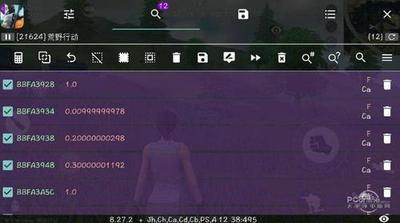
ios gg修改器免root,下载一个神奇的软件:iOS GG修改器免Root 分类:免root版 3,321人在玩 如果你是一位热爱玩游戏的iOS用户,那么你一定知道在iOS设备上使用修改器需要进行越狱或者ROOT操作。但是现在,有了iOS GG修改器,你可以轻松地使用修改器而不需要进行任何操作。 ……
下载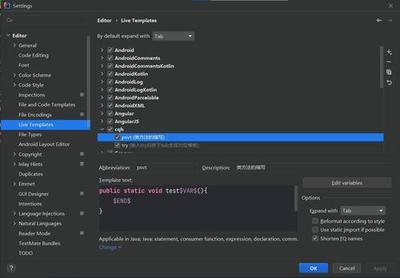
gg修改器框架root,下载GG修改器框架root打造最佳游戏体验 分类:免root版 4,280人在玩 随着互联网技术的不断发展,电子竞技已经成为了一种独具特色的文化现象,而游戏作为其中重要的一环,也受到了越来越多的关注。然而,有些游戏由于种种原因存在一些限制,比如说需要……
下载
gg修改器root网址,软件推荐:GG修改器root版 分类:免root版 4,144人在玩 如果您是一名游戏爱好者,想要更加畅快地享受游戏乐趣,那么今天向大家推荐一款非常不错的软件——GG修改器root版。这款软件可以帮助您在游戏中修改各种参数,让您能够轻松获得游戏中……
下载
gg大玩家修改器免root,下载 GG大玩家修改器免root,畅享游戏乐趣 分类:免root版 4,891人在玩 GG大玩家修改器是一款非常实用的游戏辅助工具,可以帮助玩家在游戏中获得更加优秀的表现。与传统的游戏修改器不同之处在于,GG大玩家修改器支持免root操作,即使你的手机没有进行过……
下载